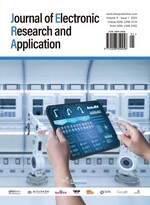U-Net-Based Medical Image Segmentation: A Comprehensive Analysis and Performance Review
Abstract
Medical image segmentation has become a cornerstone for many healthcare applications, allowing for the automated extraction of critical information from images such as Computed Tomography (CT) scans, Magnetic Resonance Imaging (MRIs), and X-rays. The introduction of U-Net in 2015 has significantly advanced segmentation capabilities, especially for small datasets commonly found in medical imaging. Since then, various modifications to the original U-Net architecture have been proposed to enhance segmentation accuracy and tackle challenges like class imbalance, data scarcity, and multi-modal image processing. This paper provides a detailed review and comparison of several U-Net-based architectures, focusing on their effectiveness in medical image segmentation tasks. We evaluate performance metrics such as Dice Similarity Coefficient (DSC) and Intersection over Union (IoU) across different U-Net variants including HmsU-Net, CrossU-Net, mResU-Net, and others. Our results indicate that architectural enhancements such as transformers, attention mechanisms, and residual connections improve segmentation performance across diverse medical imaging applications, including tumor detection, organ segmentation, and lesion identification. The study also identifies current challenges in the field, including data variability, limited dataset sizes, and issues with class imbalance. Based on these findings, the paper suggests potential future directions for improving the robustness and clinical applicability of U-Net-based models in medical image segmentation.
References
Razzak MI, Naz S, Zaib A, 2018, Deep Learning for Medical Image Processing: Overview, Challenges and the Future. Classification in BioApps: Automation of Decision Making, 2018: 323–350.
Guo Y, Liu Y, Georgiou T, et al., 2018, A Review of Semantic Segmentation Using Deep Neural Networks. International Journal of Multimedia Information Retrieval, 7: 87–93.
Ronneberger O, Fischer P, Brox T, 2015, U-net: Convolutional networks for Biomedical Image Segmentation. In Medical Image Computing and Computer-Assisted Intervention–MICCAI 2015: 18th International Conference, Proceedings, Springer International Publishing, Part III, 18: 234–241.
Neha F, Bhati D, Shukla DK, et al., 2024, U-Net in Medical Image Segmentation: A Review of Its Applications Across Modalities. arXiv Preprint: arXiv:2412.02242.
Punn NS, Agarwal S, 2022, Modality Specific U-Net Variants for Biomedical Image Segmentation: A Survey. Artificial Intelligence Review, 55(7): 5845–5889.
Taha AA, Hanbury A, 2015, Metrics for Evaluating 3D Medical Image Segmentation: Analysis, Selection, and Tool. BMC Medical Imaging, 15: 1–28.
Hariharan S, Anandan D, Krishnamoorthy M, et al., 2025, Advancements in Liver Tumor Detection: A Comprehensive Review of Various Deep Learning Models. CMES-Computer Modeling in Engineering & Sciences, 142(1).
Siddique N, Paheding S, Elkin CP, et al., 2021, U-Net and its Variants for Medical Image Segmentation: A Review of Theory and Applications. IEEE Access, 9: 82031–82057.
Azad R, Aghdam EK, Rauland A, et al., 2024, Medical image segmentation review: The success of U-Net. IEEE Transactions on Pattern Analysis and Machine Intelligence. Eess.IV, 2022: arXiv:2211.14830v1.
Bilic P, Christ P, Li HB, et al., 2023, The Liver Tumor Segmentation Benchmark (LITS). Medical Image Analysis, 84: 102680.
Feng D, Haase-Schütz C, Rosenbaum L, et al., 2020, Deep Multi-Modal Object Detection and Semantic Segmentation for Autonomous Driving: Datasets, Methods, and Challenges. IEEE Transactions on Intelligent Transportation Systems, 22(3): 1341–1360.
Nalepa J, Marcinkiewicz M, Kawulok M, 2019, Data Augmentation for Brain-Tumor Segmentation: A Review. Frontiers in Computational Neuroscience, 13: 83.
Cheng B, Girshick R, Dollár P, et al., 2021, Boundary IoU: Improving Object-Centric Image Segmentation Evaluation. In Proceedings of the IEEE/CVF Conference on Computer Vision and Pattern Recognition, 2021: 15334–15342.
Nandal N, Bordoloi D, Sanyal S, et al., 2024, Unlocking the Potential of Knowledge Management in Harnessing Technological Advancements for Design and Development. International Journal of Knowledge Management Studies, 15(2): 171–192.

